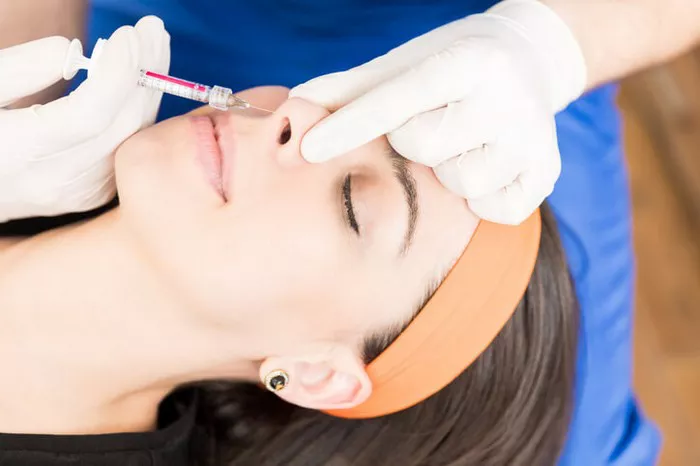Rhinoplasty, commonly known as a nose job, is a surgical procedure aimed at reshaping and enhancing the appearance of the nose. While most rhinoplasty procedures yield successful results, there are cases where patients may require further correction or refinement. In such instances, revision rhinoplasty becomes necessary. In this article, we will explore the concept of revision rhinoplasty, its purpose, and what patients should know about this secondary nasal surgery.
Understanding Revision Rhinoplasty
The Purpose of Revision Rhinoplasty
Revision rhinoplasty is a secondary surgical procedure performed to address concerns or complications that arise following a primary rhinoplasty. It is typically undertaken to correct aesthetic or functional issues that were not adequately resolved or inadvertently occurred during the initial surgery. The goal of revision rhinoplasty is to achieve the desired outcome that was not achieved with the primary procedure.
Common Reasons for Revision Rhinoplasty
There are various reasons why a patient may choose to undergo revision rhinoplasty. Some common concerns include:
Aesthetic Dissatisfaction: Patients may have unresolved aesthetic concerns such as asymmetry, visible irregularities, overcorrection, undercorrection, or persistent humps or bumps that were not adequately addressed in the primary procedure.
Breathing Difficulties: Functional issues may arise after a primary rhinoplasty, resulting in breathing difficulties. These issues can include nasal obstruction, collapse of the nasal valve, septal deviation, or persistent nasal congestion.
Unresolved Nasal Tip Problems: The nasal tip may remain bulbous, droopy, or poorly defined after the initial surgery. Revision rhinoplasty can refine and improve the appearance of the nasal tip, achieving the desired aesthetic outcome.
Nasal Structural Complications: Some patients may experience complications related to the nasal structure after a primary rhinoplasty. This can include septal perforation, nasal bone or cartilage irregularities, or nasal collapse.
Post-Traumatic Deformities: In some cases, patients may require revision rhinoplasty due to a post-traumatic deformity or injury that affects the shape and function of the nose.
Timing for Revision Rhinoplasty
It is important to note that revision rhinoplasty is typically performed after the nose has fully healed from the primary rhinoplasty, which can take up to a year or more. This waiting period allows for proper assessment of the final results and ensures that the tissues have settled before any further modifications are made. Consulting with an experienced plastic surgeon is crucial to determine the optimal timing for revision rhinoplasty based on individual circumstances.
The Revision Rhinoplasty Process
Consultation and Evaluation
The first step in the revision rhinoplasty process is an initial consultation with a board-certified plastic surgeon who specializes in nasal surgery. During this consultation, the surgeon will assess the patient’s concerns, review the patient’s medical history, and conduct a comprehensive examination of the nose. The surgeon will evaluate the previous surgical technique, anatomical structures, and any existing complications or issues that need to be addressed.
Individualized Treatment Plan
Based on the evaluation, the surgeon will develop an individualized treatment plan for the revision rhinoplasty. This plan will consider the patient’s goals, anatomical considerations, and the necessary corrections required to achieve the desired outcome. The surgeon will communicate the expected results, potential limitations, and any associated risks or complications.
Surgical Procedure
Revision rhinoplasty is performed under general anesthesia, similar to a primary rhinoplasty. The surgeon will make incisions, usually inside the nose or sometimes externally, to access the nasal structures. Depending on the specific concerns, various techniques such as cartilage grafting, septal reconstruction, or tip refinement may be employed. The surgeon will make the necessary adjustments to correct the existing issues and achieve the desired aesthetic and functional results.
Recovery and Follow-Up
The recovery process after revision rhinoplasty is similar to that of a primary rhinoplasty. Patients can expect swelling, bruising, and discomfort, which gradually subside over time. It is essential to follow the surgeon’s post-operative instructions carefully, including taking prescribed medications, avoiding strenuous activities, and attending follow-up appointments for monitoring and post-operative care.
Potential Risks and Considerations
Revision rhinoplasty carries risks and considerations similar to those of a primary rhinoplasty. These can include anesthesia risks, bleeding, infection, scarring, changes in sensation, and potential asymmetry or unsatisfactory results. It is crucial to choose a skilled and experienced surgeon to minimize these risks and achieve the desired outcome.
Conclusion
Revision rhinoplasty is a secondary surgical procedure performed to address concerns or complications that persist after a primary rhinoplasty. Whether it involves aesthetic refinements or functional corrections, revision rhinoplasty allows patients to achieve the desired results they may not have obtained in their initial surgery. By consulting with an experienced surgeon, discussing concerns openly, and following the appropriate timing, patients can undergo revision rhinoplasty with the hope of achieving the desired aesthetic and functional outcomes for their nose.


